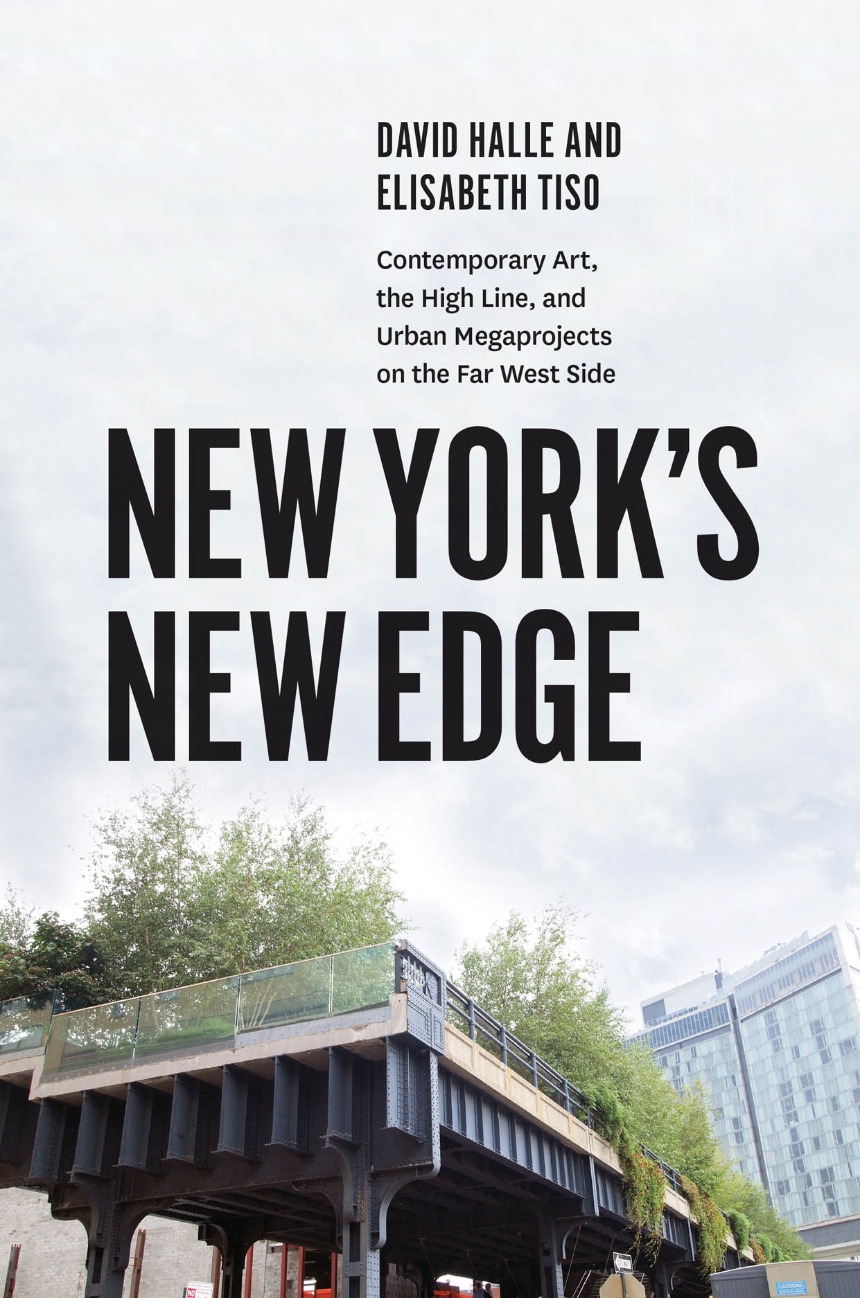New York’s New Edge
Contemporary Art, the High Line, and Urban Megaprojects on the Far West Side
9780226379067
9780226032405
9780226032542
New York’s New Edge
Contemporary Art, the High Line, and Urban Megaprojects on the Far West Side
The story of New York’s west side no longer stars the Sharks and the Jets. Instead it’s a story of urban transformation, cultural shifts, and an expanding contemporary art scene. The Chelsea Gallery District has become New York’s most dominant neighborhood for contemporary art, and the streets of the west side are filled with gallery owners, art collectors, and tourists. Developments like the High Line, historical preservation projects like the Gansevoort Market, the Chelsea galleries, and plans for megaprojects like the Hudson Yards Development have redefined what is now being called the “Far West Side” of Manhattan.
David Halle and Elisabeth Tiso offer a deep analysis of the transforming district in New York’s New Edge, and the result is a new understanding of how we perceive and interpret culture and the city in New York’s gallery district. From individual interviews with gallery owners to the behind-the-scenes politics of preservation initiatives and megaprojects, the book provides an in-depth account of the developments, obstacles, successes, and failures of the area and the factors that have contributed to them.
David Halle and Elisabeth Tiso offer a deep analysis of the transforming district in New York’s New Edge, and the result is a new understanding of how we perceive and interpret culture and the city in New York’s gallery district. From individual interviews with gallery owners to the behind-the-scenes politics of preservation initiatives and megaprojects, the book provides an in-depth account of the developments, obstacles, successes, and failures of the area and the factors that have contributed to them.
432 pages | 63 halftones, 6 figures, 1 table | 6 x 9 | © 2014
Geography: Urban Geography
History: Urban History
Sociology: Sociology of Arts--Leisure, Sports, Urban and Rural Sociology
Reviews
Table of Contents
Acknowledgments
Introduction Developing New York’s Far West Side: Contemporary Art, the High Line, Megaprojects, and Urban Growth
Part I Contemporary Art
1 Chelsea as New York’s Dominant Contemporary Art Gallery Neighborhood: A Real Estate and Finance Story
2 Contemporary Art and Life
Part II “Preservation” Projects
3 The High Line
4 The Gansevoort Market: From Meat Smells and Prostitution to Historic District, Fashion Central, Google Headquarters, and Whitney Museum
Part III Megaprojects: Why They Often Don’t Happen or Take So Long If They Do, from Javits Expansion to Moynihan Station
5 The Javits Expansion Fiasco
6 The Debate over Urban Stadiums: The New York Sports and Convention Center Fight (2004–2005)
7 The Hudson Yards: Rezonings of 2004–2009 and Beyond: The City’s Uniform Land Use Review Process, Inclusionary Zoning for Affordable Housing, Tax Increment Financing and the Number 7 Subway Extension, and the Culture Shed
8 Penn/Moynihan Station, 1992–? Fixing Infrastructure
Part IV Challenges to Chelsea’s Art Gallery District from the Lower East Side
9 The Lower East Side and the New Museum: The Next Chelsea, or Another “Wrong Turn”?
10 Balancing Urban Growth and Protection/Preservation
Notes
Reference List
Index
Introduction Developing New York’s Far West Side: Contemporary Art, the High Line, Megaprojects, and Urban Growth
Part I Contemporary Art
1 Chelsea as New York’s Dominant Contemporary Art Gallery Neighborhood: A Real Estate and Finance Story
2 Contemporary Art and Life
Part II “Preservation” Projects
3 The High Line
4 The Gansevoort Market: From Meat Smells and Prostitution to Historic District, Fashion Central, Google Headquarters, and Whitney Museum
Part III Megaprojects: Why They Often Don’t Happen or Take So Long If They Do, from Javits Expansion to Moynihan Station
5 The Javits Expansion Fiasco
6 The Debate over Urban Stadiums: The New York Sports and Convention Center Fight (2004–2005)
7 The Hudson Yards: Rezonings of 2004–2009 and Beyond: The City’s Uniform Land Use Review Process, Inclusionary Zoning for Affordable Housing, Tax Increment Financing and the Number 7 Subway Extension, and the Culture Shed
8 Penn/Moynihan Station, 1992–? Fixing Infrastructure
Part IV Challenges to Chelsea’s Art Gallery District from the Lower East Side
9 The Lower East Side and the New Museum: The Next Chelsea, or Another “Wrong Turn”?
10 Balancing Urban Growth and Protection/Preservation
Notes
Reference List
Index
